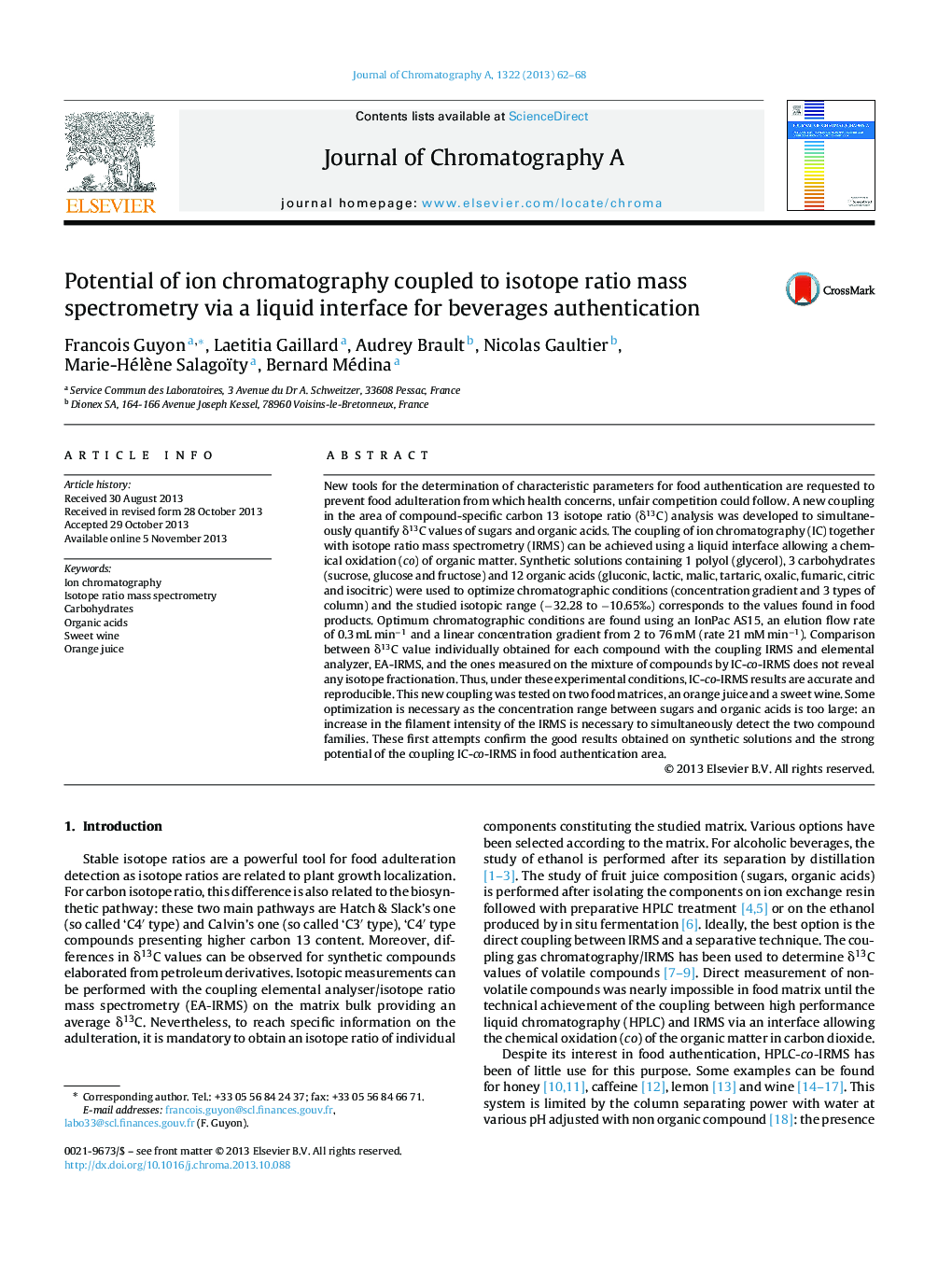| کد مقاله | کد نشریه | سال انتشار | مقاله انگلیسی | نسخه تمام متن |
|---|---|---|---|---|
| 1201051 | 1493604 | 2013 | 7 صفحه PDF | دانلود رایگان |

• Focus on the potential of a new coupling IC-co-IRMS for beverages authentication.
• Technical optimizations for δ13C values measurements of 1 polyol, 3 carbohydrates, 12 organic acids.
• Method validation with synthetic solution and EA-IRMS measurements comparisons.
• IC-co-IRMS application to commercial wine and orange juice.
New tools for the determination of characteristic parameters for food authentication are requested to prevent food adulteration from which health concerns, unfair competition could follow. A new coupling in the area of compound-specific carbon 13 isotope ratio (δ13C) analysis was developed to simultaneously quantify δ13C values of sugars and organic acids. The coupling of ion chromatography (IC) together with isotope ratio mass spectrometry (IRMS) can be achieved using a liquid interface allowing a chemical oxidation (co) of organic matter. Synthetic solutions containing 1 polyol (glycerol), 3 carbohydrates (sucrose, glucose and fructose) and 12 organic acids (gluconic, lactic, malic, tartaric, oxalic, fumaric, citric and isocitric) were used to optimize chromatographic conditions (concentration gradient and 3 types of column) and the studied isotopic range (−32.28 to −10.65‰) corresponds to the values found in food products. Optimum chromatographic conditions are found using an IonPac AS15, an elution flow rate of 0.3 mL min−1 and a linear concentration gradient from 2 to 76 mM (rate 21 mM min−1). Comparison between δ13C value individually obtained for each compound with the coupling IRMS and elemental analyzer, EA-IRMS, and the ones measured on the mixture of compounds by IC-co-IRMS does not reveal any isotope fractionation. Thus, under these experimental conditions, IC-co-IRMS results are accurate and reproducible. This new coupling was tested on two food matrices, an orange juice and a sweet wine. Some optimization is necessary as the concentration range between sugars and organic acids is too large: an increase in the filament intensity of the IRMS is necessary to simultaneously detect the two compound families. These first attempts confirm the good results obtained on synthetic solutions and the strong potential of the coupling IC-co-IRMS in food authentication area.
Journal: Journal of Chromatography A - Volume 1322, 27 December 2013, Pages 62–68